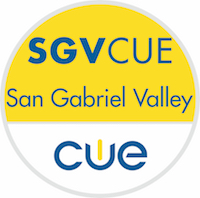 Final flights in the cafeteria on Friday.
Final flights in the cafeteria on Friday.
As a new STEM PBL middle school teacher starting on this wild adventure, what did I learn from this experience? To avoid the giant laundry list, here are the top 10 items:
- One full week is not enough for a project that is as simple as a paper airplane.
- Flying paper airplanes is SO MUCH FUN. Every student folded and tested at least one plane, although not everyone had their plane on the “final flight” day.
- Not all students appreciate the application of the engineering design process – the need to document and reflect slows them down – they just want to get to the action.
- A lot of my students, despite being in middle school, lack fine motor skills to make “crisp” folds.
- Instead of making modifications on the plane they’ve folded, the students wanted to fold another one that is different.
- Out of almost 160 students, only 2 folded an original plane that they created based on other designs they saw via YouTube, Instructables, etc.
- OneNote ROCKS my socks, but not the students’ socks, yet.
- Given the choice to work alone or with a partner, most chose to work with a partner.
- Girls need more encouragement from me, especially the ones who aren’t the “A” students.
- I give them too many choices in the spirit of fostering creativity.
What does this mean?
- My super, duper, well-planned syllabus is thrown off track. It’s ok. This is about student learning. Depth of understanding and application of concepts over breadth.
- I need to ensure my students feel ready for the final “show day”of the project and have something to show before they leave.
- I will need to provide specific times during class for them to document and reflect on their designs and processes, until documentation becomes second nature in the trial process.
- I have not figured out ways in which I can help them improve their fine motor skills aside from repetition of the same task.
- I wonder if there’s something about failure with the desire to scrap everything and start over with a new idea. Could there be something about resilience and persistence? We’ll have a class discussion about this with our upcoming project.
- I was surprised by their desire to follow rather than create. Many students said they didn’t know how to fold a paper airplane, so they felt the need to watch a video and follow the instructions. My mind raced back to Michael Apple’s comment that educators are creating machines to follow directions. Then again, personally, I feel that I cannot innovate without having a basic idea of something first. Or maybe, if we spent more time on folding the planes, rather than just one week, they would come up with their own plane designs.
- The students need more time with OneNote to discover all of its cool tricks before they can appreciate it like I do. I will need to integrate small portions of usage instruction each week.
- Two brains are better one. Having the choice to have a partner is important to them.
- I will encourage and high five the bajeebees out of these young ladies so that they have the confidence to feel like they are rockstars. This is really a systemic, societal issue and we as educators need to be acutely aware of our actions and words.
- I need to provide the basic structure of a project. Then provide guided creativity (what an oxymoron) so that my students are not overwhelmed by the multiple possibilities and variations.
So, as we wrap up paper airplanes, I can’t wait to see the projects they create with parachutes next week. I’m leaning towards everyone creating a “control” parachute so they know the basic structure. I’ll see my creating experience on Saturday when I build all the parachutes and decide. Stay tuned!


Recent Comments